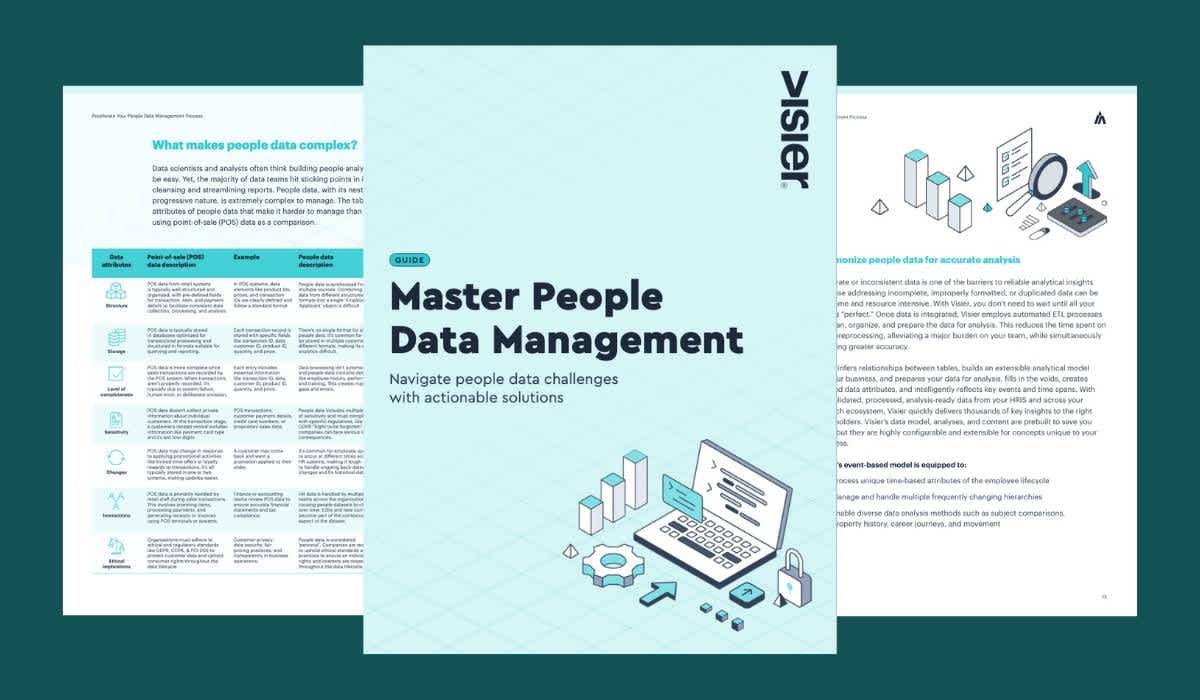Diversity, Equity, and Inclusion: What it Means, and Why it’s Important
Companies wishing to boost their reputation and productivity must look to diversity, equity, and inclusion. Learn more.

Over the past several years, companies have broadened their focus on diversity to encompass inclusion, recognizing that it’s not enough to build a diverse workforce if employees aren’t included, listened to, and taken seriously.
More recently, a third concept has been added to the mix—equity. Now employers are most likely to talk about diversity, equity, and inclusion—or DEI—when they’re discussing their efforts to build and maintain an engaged workforce.
But what do these terms really mean? Here we take a look at the various ways these terms have come to be used with a goal of providing clarity and consistency.
What is diversity, equity, and inclusion?
Diversity, equity, and inclusion (DEI) is a phrase used to describe company policies, programs, and training initiatives that promote the hiring, representation, and participation of employees with different backgrounds, lifestyles, abilities, and personal identities within an organization.
Chances are if you ask any HR leader—or Chief Diversity Office (CDO)—how they define diversity, equity, and inclusion you’ll hear some differing opinions. Listen long enough, though, and some consistencies will start to emerge.
What is the difference between diversity, equity, and inclusion?
Diversity, equity, and inclusion all have their own definitions that, together, comprise the concept of DEI in a human resources context. These definitions are as follows:
Diversity: The what of DEI
Diversity is a term that refers to the differences among people, in this case employees.
Diversity, or differences, can be considered from a variety of different perspectives. Gender, race, nationality, age, religious beliefs, sexual orientation, political beliefs, veteran status, and so on. Diversity is an objective concept. Organizations can, and do, track the number of employees who fall into any of a number of different categories both for regulatory and employee relations purposes.
Equity: The measure of DEI efforts.
Equity is focused on any gaps or barriers that might adversely affect employees based on their diversity.
Equity is about fairness, equal opportunity, and taking steps to avoid discriminatory practices. That’s a complex concept because it is both so broad and because it sometimes encompasses subjective considerations.
What are, for instance, “equitable promotion opportunities”? We can measure actual promotions easily, but how do we measure equity in providing opportunities for those promotions?
Another challenge with the concept of equity is that the outcomes of employee practices are often not only unintentional, but unintended. Even if a company has objectively fair criteria for promoting individuals, the results of those policies in practice may lead to a relative lack of opportunities for those from diverse backgrounds. For instance, requiring a four-year degree for a position which may unintentionally weed out candidates from lower socioeconomic backgrounds.
Importantly, equity does not mean equality. This has been demonstrated in a compelling way in a popular cartoon that illustrates the difference using a visual metaphor showing three people of varying heights standing on a box to watch a sporting event. There’s equality in the boxes provided, but there is no equity in the views the boxes provide.
Inclusion: The how of DEI efforts.
Inclusion refers to steps companies, their leaders, and managers can take to ensure that employees feel a sense of belonging, and that their input and ideas are valued. Inclusion involves ensuring that everyone, despite their differences (diversity) have an equal opportunity (equity) to be heard.
Inclusion is a focus on understanding, accepting, and valuing the differences that employees bring to their jobs and the company. Those differences, multiple studies have confirmed, are a significant driver of creativity and innovation. For instance, as long ago as 2003, Harvard Business Review published a now classic article written by Sylvia Ann Hewlett, Melinda Marshall, and Laura Sherbin on how diversity can drive innovation.
The piece was based on their research of 1800 business professions, 40 case studies and a number of focus groups and interviews where they looked at two types of diversity—inherent and acquired. Inherent diversity refers to traits we are born with (e.g., gender, ethnicity) and acquired are traits we gain through experience.
Companies that demonstrated both of these types of diversity were referred to as 2-D companies. Through their research, the team identified that 2-D companies were better able to report growth in market share and the capture of new markets to a significantly higher degree than companies lacking 2-D diversity.
Unfortunately, this research also indicated that most respondents—78%—worked at companies that lacked such diversity.
These results have been supported by other research over the years.
The Great Place to Work organization’s ongoing research, for example, has continued to demonstrate that diverse and inclusive teams “are the engines of innovation.” Why is that the case? Because, they say, innovation is about “the game-changing ideas” people create when they come together as part of diverse and inclusive teams.
Together, diversity, equity and inclusion (DEI) efforts are designed to ensure:
That the workforce has been built to include a wide range of different types of employee backgrounds and perspectives (diversity).
That barriers have been removed and processes put in place to ensure employees are on equal footing in terms of pay and other opportunities (equity).
That leaders and managers seek and elicit open and honest feedback and input from all (inclusion).
And just when you think you’ve got the DEI acronym mastered and understand each element and how they work together, there’s another letter to consider: B.
What’s DEIB?
Adding the letter “B” to DEI, to create DEIB, goes a step beyond inclusion to also encompass employees’ individual sense of feeling that they are welcomed into the organization, and that they are valued—in short, that they belong.
The addition of the “B” is really a signal of evolution. As companies become more experienced and sophisticated in their DEI efforts, they can naturally continue the process of continual improvement beyond inclusion to belonging.
Neither DEI or DEIB, of course, are linear processes. Any organization is always in a state of flux with each of these concepts and with their intersections and relationships. New employees join the organization. Some employees leave the organization. Management and leadership shifts. The external environment shifts.
Creating a culture that supports DEI and DEIB is an ongoing process—not a one-time event. Along the way, it’s important for companies to monitor and measure the effectiveness of their efforts.
How do you demonstrate diversity, equity, and inclusion?
Organizations can demonstrate diversity, equity, and inclusion in different ways.
Demonstrating diversity can be a matter of simply counting people who fall into different demographic categories. For instance, how many people of color are board members or hold senior leadership positions.
Demonstrating equity is more complex and involves taking a deep dive and doing an in-depth analysis of employee relations practices to determine whether they are equitable. This might include such things as doing a pay analysis to determine equity between male and female employees in the same jobs, or equity in jobs that fall into the same pay grade.
Demonstrating inclusion is also somewhat subjective and really dependent on employees’ own perspectives. The demonstration of inclusion might occur, for instance, through an employee engagement assessment where employees are invited to share their perspectives on the extent to which they feel included in various types of activities or opportunities within the organization.
Why is diversity, equity, and inclusion important?
Diversity, equity, and inclusion are always important and always have been, long before they started getting attention to such a high degree. In an era that has been characterized as the “great resignation” or an era of “quiet quitting” they’ve become even more important.
We’ve already noted the impact of DEI on innovation and business success. In addition, studies continue to show that employees, themselves, value organizations that visibly demonstrate a strong commitment to DEI. For instance, almost 80% of respondents to a CNBC/SurveyMonkey Workforce Survey say they want to work for a company that values DEI.
From an equity standpoint, the internal mobility of people between departments and layers of the organization can be an important key to building a diverse workforce.
The elements of DEI are important to build and sustain a culture where employee engagement and loyalty are high.
4 tips for setting diversity, equity, and inclusion goals
In considering their DEI efforts it’s important for organizations to establish and work toward specific goals.
Here are some tips for setting diversity, equity, and inclusion goals to help your company—and your employees—stay on top of progress being made and areas where attention may still be needed.
1. Establish a baseline of where your company currently stands in terms of diversity, equity, and inclusion
Based on your analysis of DEI, determine your baseline. Again, diversity will be the metric easiest to quantify. But equity and inclusion can also be measured, even if through input from employees, managers, and others, on how they perceive the company.
2. Benchmark your performance against other companies
Benchmarking against other organizations can give you a sense of areas that require more or less attention. Companies on the Great Place to Work list can provide a good starting point. Visier also has examples of companies that have excelled in their DEI efforts. Snap Inc. is one example.
3. Determine your areas of strengths and weaknesses
Once you’ve determined the gaps between your current levels of performance and the ideal, or best in class, comparison, you can create a list of strengths and weaknesses and prioritize the weaknesses you wish to focus on.
4. Establish goals and objectives
Goals and objectives should be measurable and quantifiable. Initially, you may simply want to put a stake in the ground—identifying a point between where you are now and where you would, ideally, wish to be. That then becomes your focus for some specific period of time—six months, a year, or longer, depending on how challenging and achievable these are.
Broadly, setting your DEI goals will involve determining how DEI will move your business forward, determining your DEI strategy, and measuring success.
DEI goals without action, of course, are just empty promises. Taking a guided approach to DEI planning can help you build accountability and drive traction. Keep everyone on track, and informed, by monitoring data and people analytics to accurately measure change.


